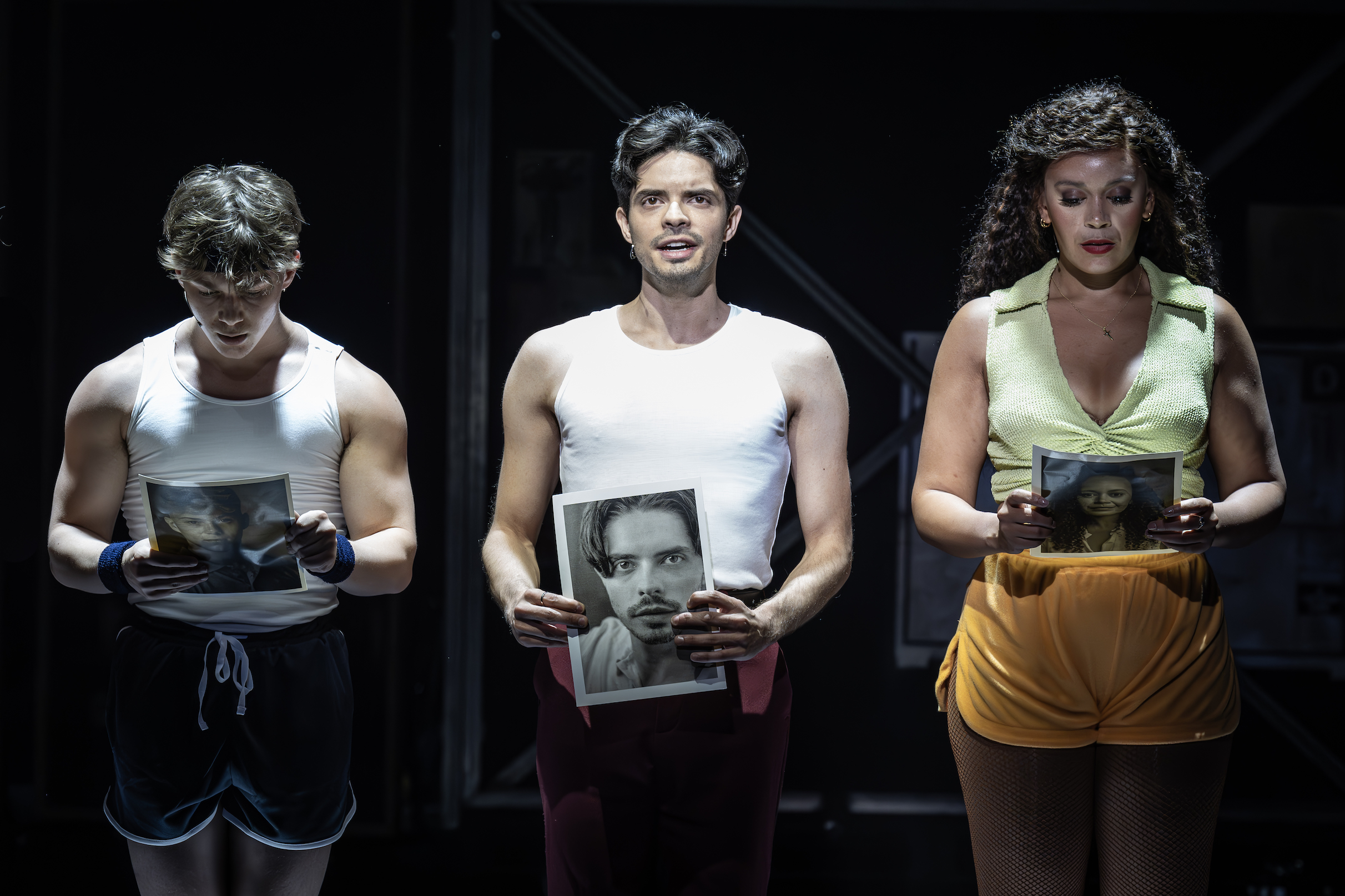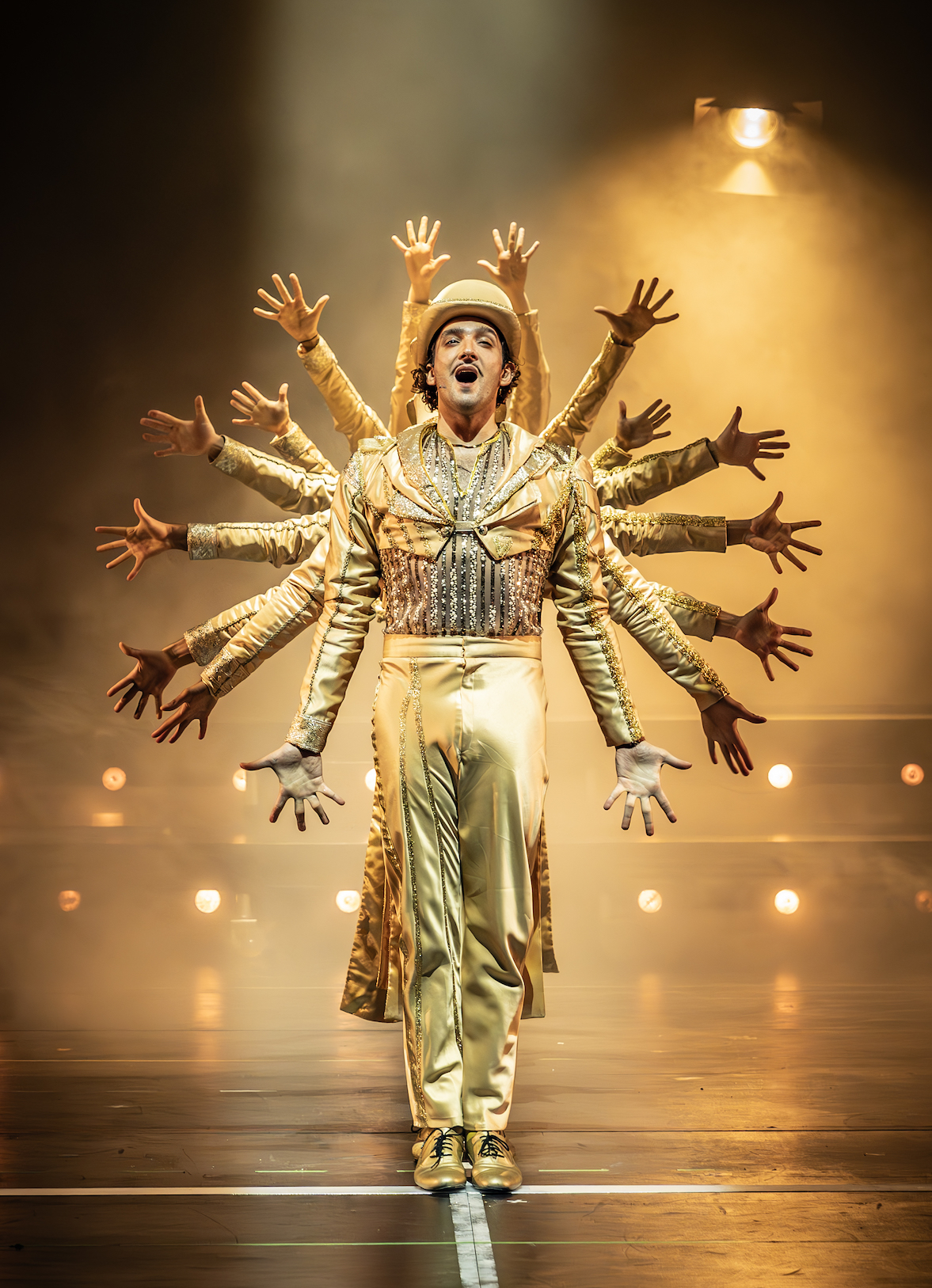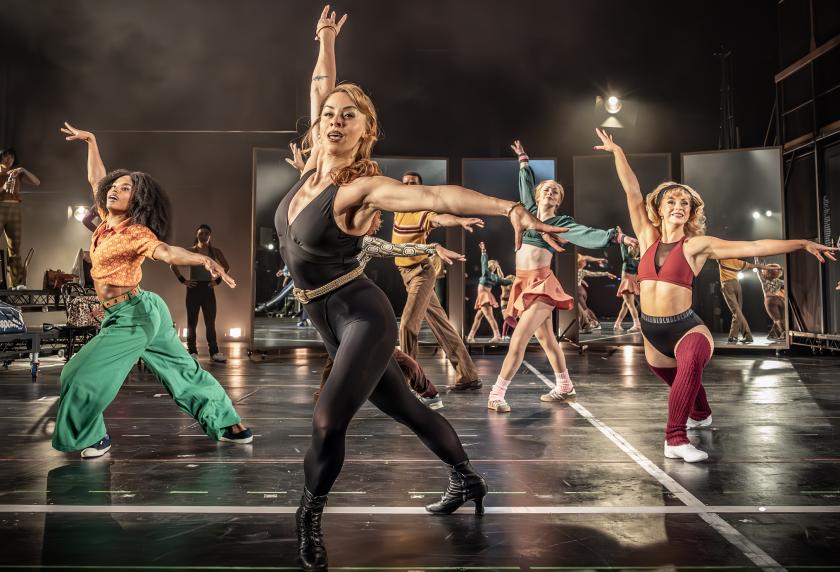A Chorus Line reigned supreme on Broadway from 1975 to 1990, a bold, bare-bones piece that for once put musical theatre’s hoofers in the spotlight. “As welcome as a rainbow after a thunderstorm” was Clive Barnes’s summation in the New York Times.
It was there when Aids began to decimate theatre-land, taking its creator, Michael Bennett, in 1987 too. It was a show that acknowledged the flesh and blood performers who went on making the magic happen and lent them added poignancy. And it presumably did so again in 2021, when the Curve Leicester created this production as a one-finger salute to Covid. What to make of it now?
This production has been on a UK tour, directed by Nikolai Foster, and at first sight, the omens are good. There’s the familiar scene: a vast rehearsal room with just a mic stand at the front, opera chairs to the side and big mirrors at the back, where a group of dancers, backs to us, are being put through their paces by a tall, lithe director, Zach. If you didn’t read your programme before the lights went down, this silver fox barking out instructions in an American accent is, yes, Matthew Bourne regular, Adam Cooper.
As his audition for a new Broadway show goes about reducing the performers from 17 hopefuls to just eight, we make their acquaintance, however temporarily. They start as people hiding their faces behind photos of themselves, but, prodded by Zach, slowly disclose their stories. This is the core of the piece, a kaleidoscopic reflection of the passions that drive people to dance. One saw The Red Shoes and became obsessed with becoming a ballerina; another found solace in dancing when school bullies drove him to despair; a woman told she wasn’t beautiful discovered “everyone is beautiful at the ballet”. As they talk, this production uses the now-standard technique of projecting close-ups of their faces, filmed onstage by Zach or Larry (Ashley Jordon-Packer), the slinky dance captain. It’s the first sign that the production is going to move beyond the bare-bones approach first workshopped at the Public Theater. We also get the disembodied voice of Zach talking to the dancers, like an all-knowing supreme being. And at the finale, with all the dancers back on for a big razzle-dazzle moment in gold costumes and toppers, we get fireworks, glittery ticker-tape and a dramatic lowering of a multi-tiered lighting rig. This, the production seems to be saying, really is a Broadway show, with all the trimmings.
As they talk, this production uses the now-standard technique of projecting close-ups of their faces, filmed onstage by Zach or Larry (Ashley Jordon-Packer), the slinky dance captain. It’s the first sign that the production is going to move beyond the bare-bones approach first workshopped at the Public Theater. We also get the disembodied voice of Zach talking to the dancers, like an all-knowing supreme being. And at the finale, with all the dancers back on for a big razzle-dazzle moment in gold costumes and toppers, we get fireworks, glittery ticker-tape and a dramatic lowering of a multi-tiered lighting rig. This, the production seems to be saying, really is a Broadway show, with all the trimmings.
It’s hard to begrudge the show this razzmatazz, but it nonetheless amplifies a sense that the grit at its core has been softened. Perhaps we should be glad times have moved on in a positive way: when one dancer talks of first realising he was gay and another describes the sexual abuse he suffered watching musicals in seedy venues, the frissons those early Broadway audiences would have felt don’t have quite the same impact now. And because we have seen MeToo strip away the facades that abuse can hide behind, the confessions here don’t really delve far enough.
 In their final appearance, the individual dancers are triumphantly transformed into a chorus line, a well drilled machine, high-kicking as one, all grinning in that obligatory big-finale way. Their heartache and struggles have been repackaged as glamorous entertainment. But that’s where the emotional level remains, in need of more pathos and more nuanced characterisations that can reach the poignancy at the script’s beating heart. As Zach comments to Sheila when she starts offering him her backstory, “Don’t perform, talk.” It’s a precept that not all onstage can adhere to.
In their final appearance, the individual dancers are triumphantly transformed into a chorus line, a well drilled machine, high-kicking as one, all grinning in that obligatory big-finale way. Their heartache and struggles have been repackaged as glamorous entertainment. But that’s where the emotional level remains, in need of more pathos and more nuanced characterisations that can reach the poignancy at the script’s beating heart. As Zach comments to Sheila when she starts offering him her backstory, “Don’t perform, talk.” It’s a precept that not all onstage can adhere to.
Some performances are spot on – Toby Seddon’s rangy Bobby, the upper middle-class weirdo who used to break into people’s houses to rearrange their stuff; Bradley Delarosbel’s Gregory Gardner (pictured above), the alias of a poised, witty camp Jewish man; Amy Thornton’s Sheila, a sassy older woman shielding herself with practised over-confidence; and, especially, Manuel Pacific’s Paul San Marco (pictured top, centre), the Puerto Rican drag queen whose parents had unexpectedly shown up where he worked.
All of these portraits are based on the reminiscences of 20 real dancers Bennett taped, and they have a welcome authenticity when the actor playing them has the chops for delivering it. Cooper, while still a welcome sight as a dancer, is a tad too vanilla for the role. Zach’s former liaison with Cassie (Carly Mercedes Dyer), a star who had dropped out of the limelight and has returned at hoofer level – her choice, she insists, “I’m a dancer” – feels synthetic.
Among the cast are some strong belters (Jocasta Almgill as Diana Morales, pictured top, right; Dyer’s Cassie) and fine dancers (Redmond Rance as Mike Costa from the Bronx, Archie Durrant’s gym-kitted Mark Anthony, pictured top, left, Katie Lee as livewire Kristine Urich, with a singing voice as comically bad as Lina Lamont’s in Singing in the Rain). Marvin Hamlisch’s songs still seem pleasant and serviceable, though for me only “One” really wows. MD David Shrubsole throws in some funky Shaft-stylings and adds ominous subterranean rumblings to “One”, while Ellen Kane’s choreography is suitably energetic and fun.
It all slips down easily, but that’s the problem. These people should grab us and move us, not just keep us entertained for two hours.















Add comment